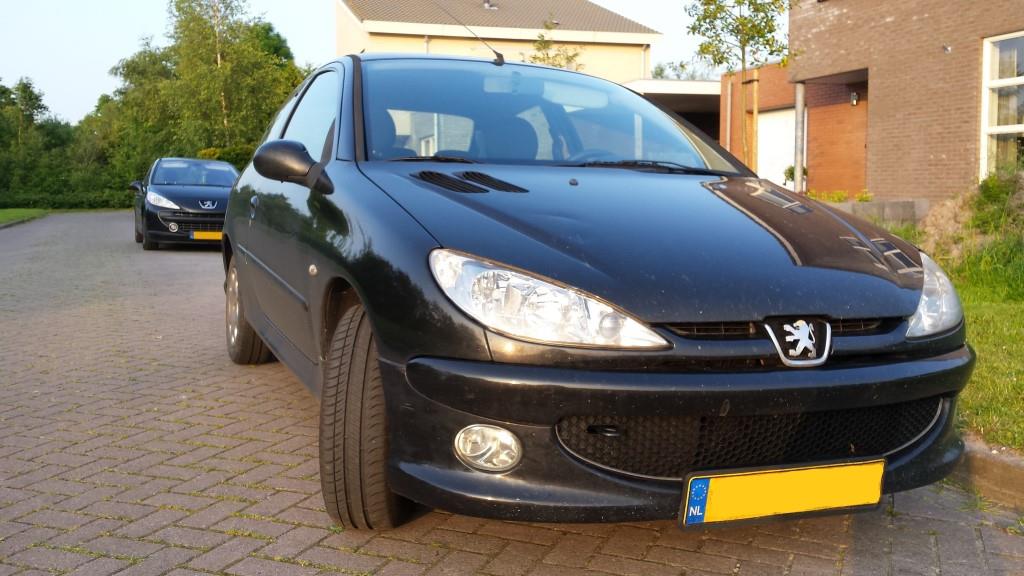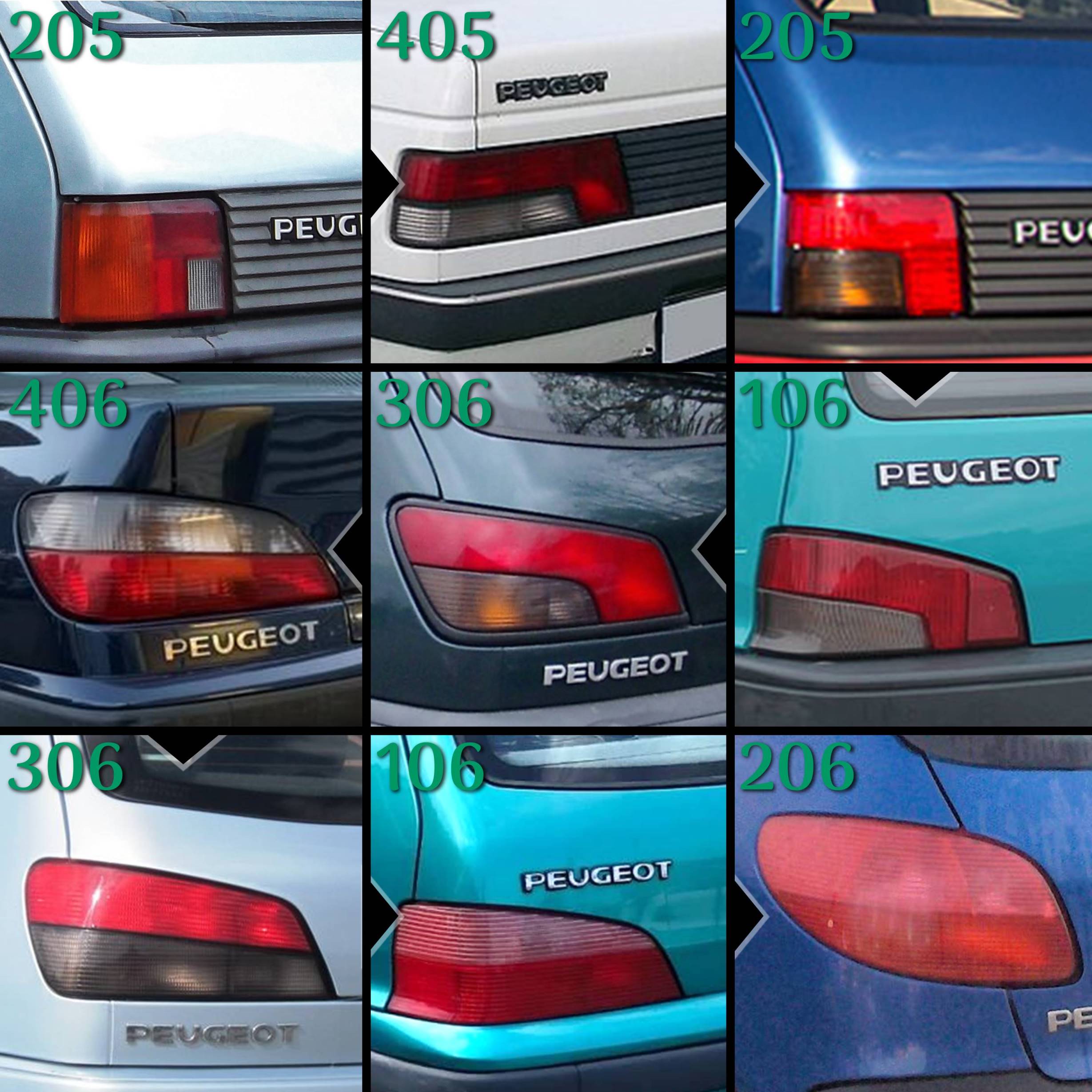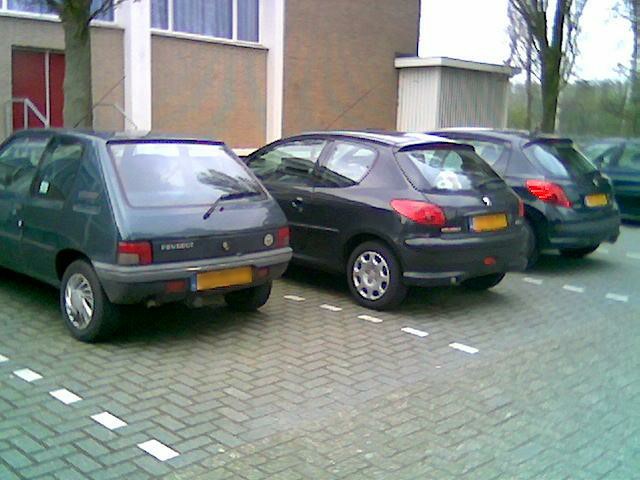MY CLASSICS
Peugeot 206
Cars
| 20-09-2019
In 1997, on vacation in England, I bought an issue of AutoExpress. The only thing I can still remember of the contents of that magazine, is a small picture that was attached to a letter to the editor. It was a spy photo from a previous publication, of a Peugeot that I did not yet know of: the 206.
Something else I certainly didn't know at that time, is that the 206 would be the car in which I really learned to drive after I passed my driving test. I didn't have a car back then, but my girlfriend - now my wife - had a blue


For a fresh appearance, you obviously need more than a beautifully evolved design of the rear lights. The overall picture of the car must be right: the proportions have to be good, and the design must be fresh enough, but not that revolutionary that people don't want to be seen in it. Peugeot managed to touch the right chord with the 206, as far as I'm concerned, which is confirmed by the sales figures. In total, around 8.3 million two-zero-sixes were produced, of which around 150,000 were sold as a new car in the Netherlands, making it the best-selling Peugeot ever in the Netherlands. According to Finnik, 101,586 Peugeots 206 are still in circulation in the Netherlands at the time of writing, some of which are probably second-hand imported cars. That's right with my impression; in our village you can still see them on every street corner, so to speak.

P.S. For those who have read the first blog in this series: in the yellow design at the top right you can recognize elements of the 206.
Something else I certainly didn't know at that time, is that the 206 would be the car in which I really learned to drive after I passed my driving test. I didn't have a car back then, but my girlfriend - now my wife - had a blue
three-door Car with a door on each side and a large tailgate up to the roof
with the 1.9 diesel engine. As I grew up with PSAPeugeot Société Anonyme, parent company of Peugeot and Citroën, among others
diesels, it made me slightly nostalgic. By the time I learned to change gear without mistreating the gearbox, 'the smurf' was traded in for a black three-door with the 1.4 HDi engine. The latter was from after the facelift and was a lot quieter. It was also a more luxurious version with things like air conditioning, factory radio, sports seats and white dials, with the typical French scale of 10-30-50-70-90-etc. I also remember that the flashing light had a much more civilized click sound. Unfortunately, you could still not set off without taking along spare lights. Apart from that, we have driven with great pleasure in both 206s.

My wife's 206, with my 207 behind it
The reason I remember the picture in AutoExpress, is that the design of the 206 really appealed to me. I had that anyway with Peugeots, but with the 206 in particular. I thought it was a very fresh appearance. If you put the 206 next to a 205, the car it actually succeeded, there are few similarities and you can clearly see that there are 15 years between both designs: a revolution. If you look at the models that have been put on the market in those 15 years, you will however see a logical line: evolution. The continued development of design is one of the things I have always liked in Peugeot's designs.
Evolution of the rear lights, from 205 to 206
The rear lights are a nice illustration of the design evolution at Peugeot. On the original 205, the rear lights were divided into three separate squares. In 1987, the 405 was released, with a rear light layout that would become recognizable for Peugeot: a grey block with a red block on two sides along it. With the 1987faceliftUpdate of an existing model, often with slightly modified design
the rear lights on the 205 got the same layout. The 106, that together with the 306 was intended as a successor to the 205, had the rear lights low on the body, like the 205, but then slightly wider with a diagonal top – in fact the same shape as the headlightLight unit on the front of a car
s. The 306 got an evolution of that shape and the rear lights were placed slightly higher on the rear. The 406, which succeeded the 405, got rear lights with a similar shape to the 306, but with red and grey separated by a straight line. With the facelifts, the 306 got the same, nut the 106 got completely red rear lights. Then came the 206, also with all-red rear lights, but with a somewhat rounder-shaped evolution of the 306 rear lights. And so the rear lights of the 206 are a logical continuation of what Peugeot started with on the 205.
For a fresh appearance, you obviously need more than a beautifully evolved design of the rear lights. The overall picture of the car must be right: the proportions have to be good, and the design must be fresh enough, but not that revolutionary that people don't want to be seen in it. Peugeot managed to touch the right chord with the 206, as far as I'm concerned, which is confirmed by the sales figures. In total, around 8.3 million two-zero-sixes were produced, of which around 150,000 were sold as a new car in the Netherlands, making it the best-selling Peugeot ever in the Netherlands. According to Finnik, 101,586 Peugeots 206 are still in circulation in the Netherlands at the time of writing, some of which are probably second-hand imported cars. That's right with my impression; in our village you can still see them on every street corner, so to speak.

I really like pictures like this: our 206 between its predecessor and successor
The 206 was put on the market in 1998, roughly at the same time as one of its main competitors, the Renault Clio. A number of important competitors were about to be replaced: the Fiat Punto and Toyota Starlet (succeeded by the Yaris) in 1999, the Opel Corsa in 2000 and the Volkswagen Polo in 2001. By the way, the Polo was facelifted in 1999, one year after the introduction of the Clio and 206, and got completely red rear light units. Coincidence? A fact is that the 206 could expect a lot of competition, since cars often sell best in their first full year of sales. Still, the 206 seemed to have little trouble with all those new competitors. In the Netherlands, Peugeot sold 16,599 206s in the first full year, making the 206 the fourth best-selling model on the Dutch car market. In the following years, sales increased even further and in 2002 the 206 was the best-selling car in the Netherlands. Between 1998 and 2009, Peugeot sold about 83,000 206s more than Renault sold the Clio II between 1998 and 2006. The 206 even managed to convince around 70,000 customers more than the always popular Corsa and Polo. Now that you can call a top seller!P.S. For those who have read the first blog in this series: in the yellow design at the top right you can recognize elements of the 206.
MY CLASSICS
In the My classics section, I add a model to my digital collection of classics every other week. For that, I select cars whose design appeals to me or evokes memories. So nostalgia, and very subjective. Hence the section title: my classics.
In the next episode: Perhaps the most beautiful car ever...
